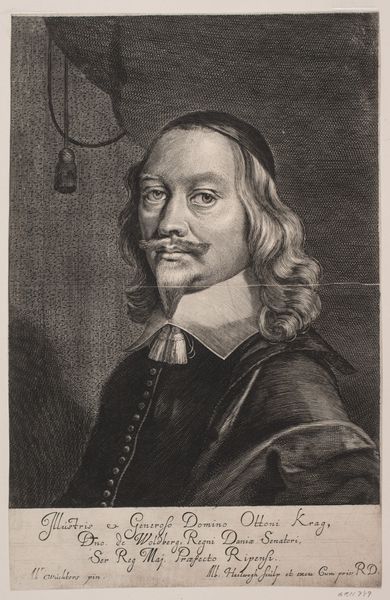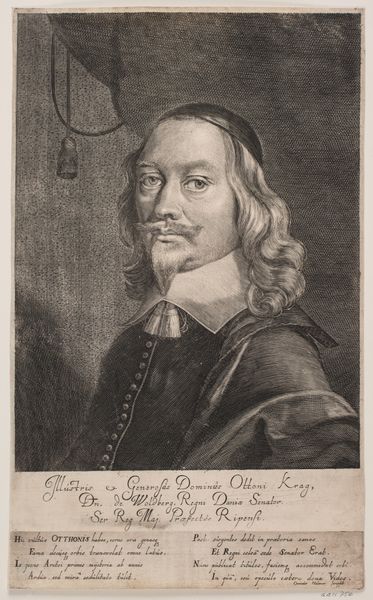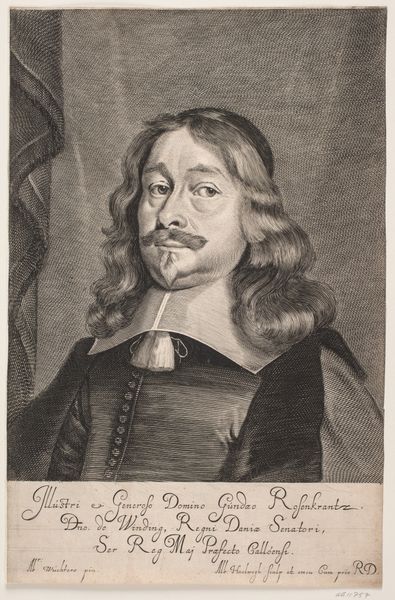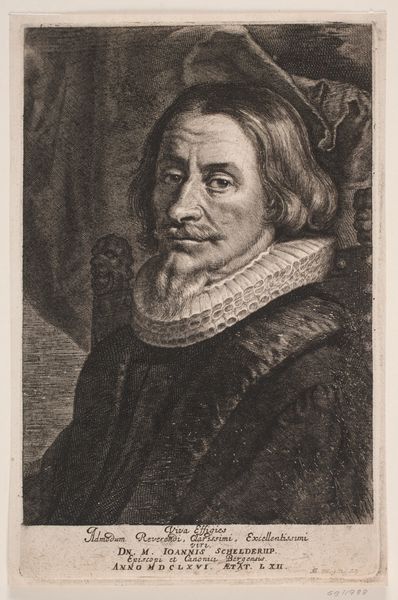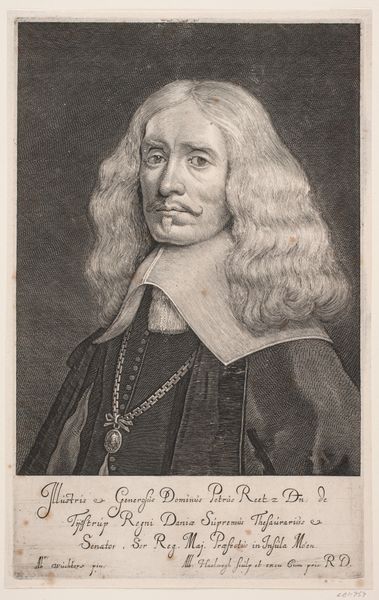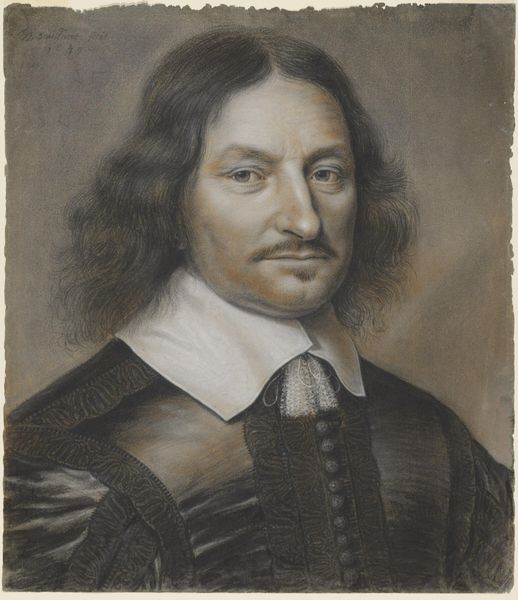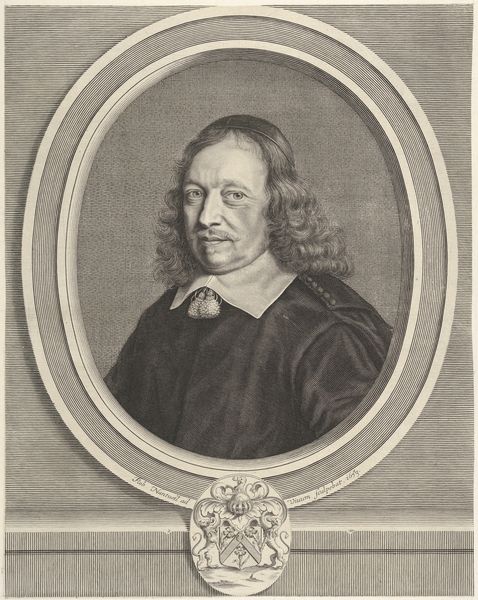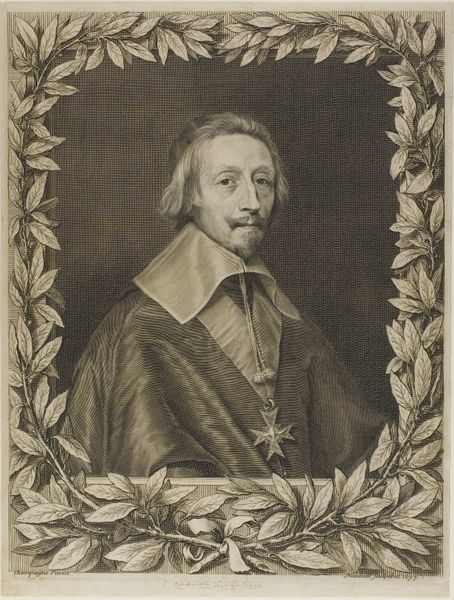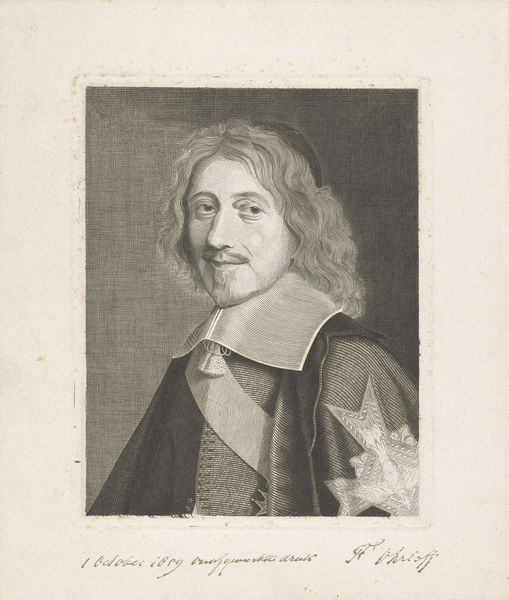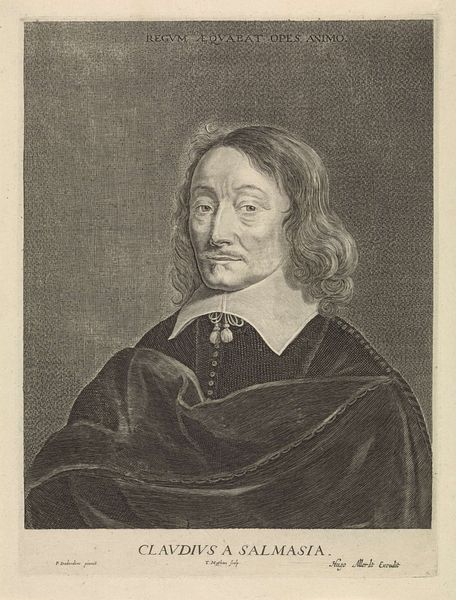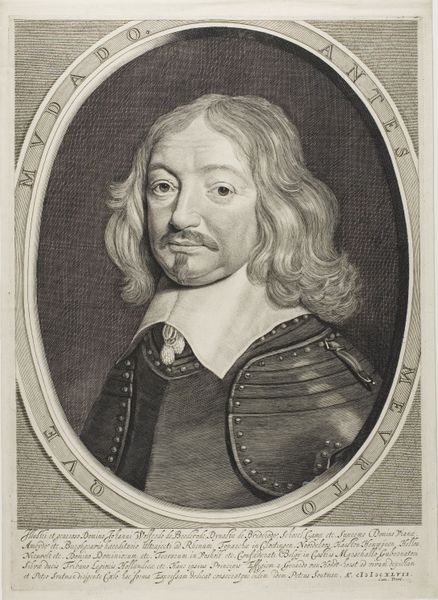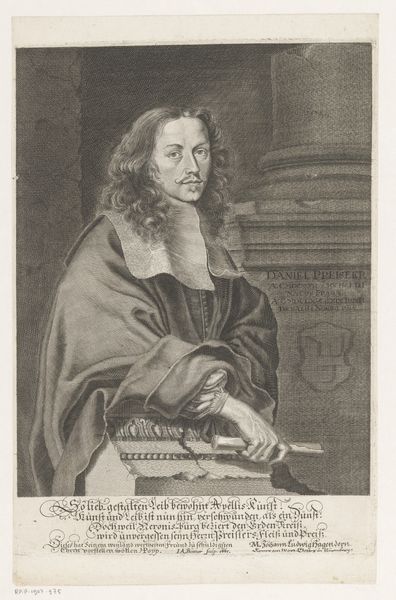
print, engraving
#
portrait
#
baroque
# print
#
engraving
Dimensions: 322 mm (height) x 207 mm (width) (bladmaal)
Curator: This is Albert Haelwegh's portrait of Otto Krag, created between 1655 and 1659. It's an engraving. What stands out to you initially? Editor: The detail is striking for a print. He looks every bit the nobleman. It does feel…formal, imposing even. What do you see in it, beyond the immediate impression? Curator: As a historian, I immediately look to the context. Consider the rise of portraiture as a tool for solidifying power and social status in the Baroque era. This image served a purpose beyond simple representation. Editor: So, it's a kind of political statement? Curator: Precisely! These prints, reproduced and distributed, created a visual presence for Krag, embedding him in the social consciousness. Think about the language used in the inscription—"Illustris" and "Generoso." What kind of message does it send? Editor: It’s definitely projecting authority and virtue. The visual language works with that as well: the stern gaze, the costly clothing, the very fine engraving…it’s all adding up to influence. Curator: Exactly. Even the technical choices, like the engraving itself, speaks to Krag's perceived importance and visibility within the socio-political landscape of the time. Editor: So, while seemingly just a portrait, it reveals the social and political dynamics at play. Curator: Absolutely. And it reminds us that art isn't created in a vacuum. It’s reflecting and shaping social realities. Editor: That's given me a whole new perspective on what portraiture can achieve, especially in that period. I appreciate understanding the larger role this work had within its context.
Comments
No comments
Be the first to comment and join the conversation on the ultimate creative platform.
